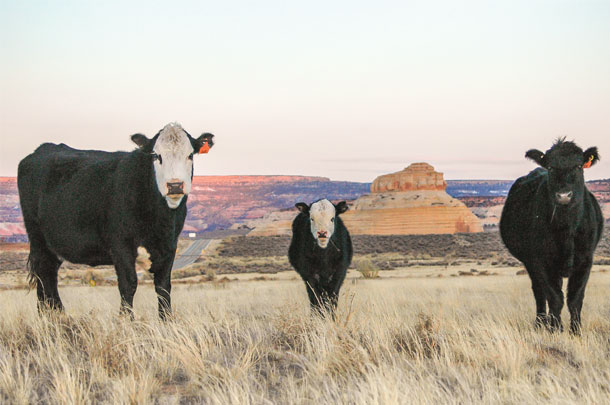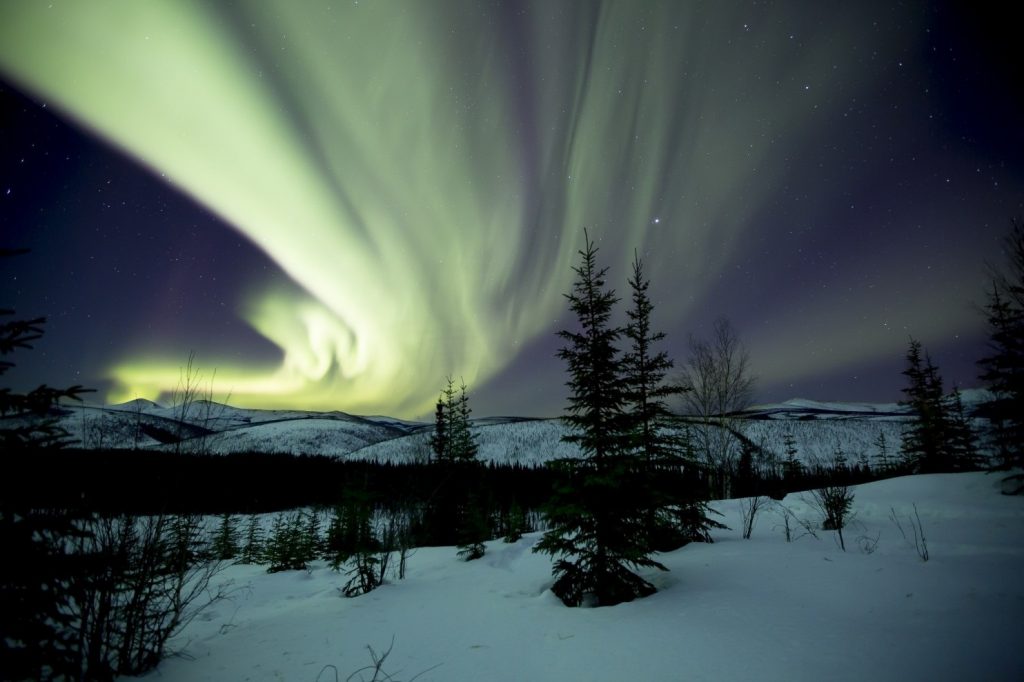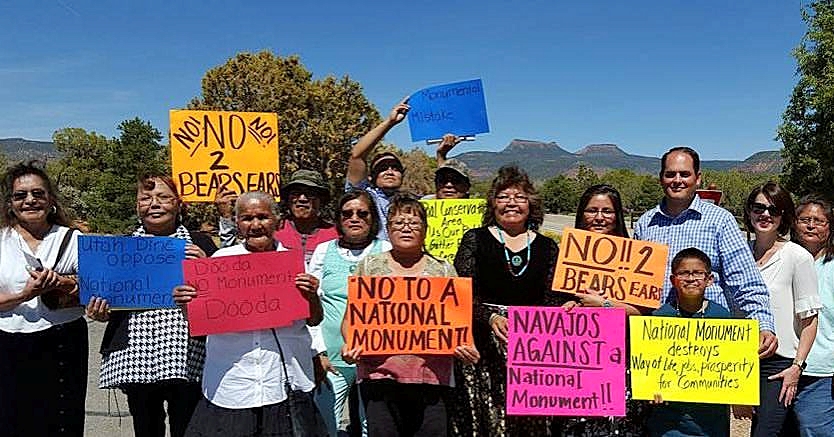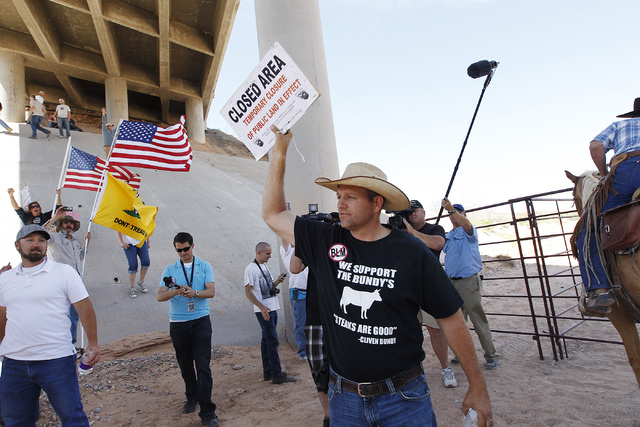Just like humans, cattle have a personal bubble – a flight zone. Phillips can prove this to many a camper after trying to move cattle to corrals and finding a camp set up. He has also had cattle spook after hikers appear adventuring through the back country.
“They ruined it by making it a monument,” Phillips says. “There are so many people tromping around now.”
Jamie Hawley
Southern Utah – where Indians scribed their history on cliffs, Butch Cassidy hid from the law, and John Wayne became the Duke. The area has been known as the land of cowboys and Indians.
Thousands of cattle grazed the seas of sagebrush and red rock canyons while generations of ranchers made a living.

The beautiful landscapes and deep history inevitably brought government regulation. According to the Congressional Research Service, Utah ranks second in the nation with percentage of public land – an estimated 64.9 percent is federally controlled.
Ranchers work with the government to carry on Western traditions, but sometimes land regulation makes it difficult to be a cattleman.
Government restrictions
According to the National Park Service, there are six national parks and six national monuments spanning across southern Utah. Ranchers in southern Utah utilize this public land as much as they can through the Bureau of Land Management (BLM).
The BLM allocates a certain number of animal unit months (AUMs) to graze on designated allotments. AUMs are equal to the amount of forage needed to feed a cow-calf pair. Ranchers are required to pay for the number of AUMs they release to graze each year.
The BLM has the power to raise or decrease the number of AUMs depending on erosion, precipitation and forage availability. This component creates a difficult situation each year for the rancher who depends on that land.
Fifth-generation rancher Hal Hamblin was ranching when President Bill Clinton signed off on the Grand Staircase-Escalante National Monument in 1996 in the central part of southern Utah. Hamblin grazes 120 mother cows on the monument and other various BLM permits.
He has been working with the BLM to assure pasture regeneration for full carrying capacity on the monument permits, but land restrictions make it difficult for any rangeland improvements.
“You can’t cut a cedar post to fix a fence; you can’t take equipment in to regenerate a pipeline to extend it,” Hamblin says. “Just things to better feed cattle and the land they can utilize – you can’t do any of that.”
According to Hamblin, when the monument was created, his AUMs were at full use; now it has been cut down to 70 percent. He can’t remember a time he has used his permits at the full 100 percent.
“They have shut grazing down on the monument by not allowing any improvements,” Hamblin says. “If I don’t have enough on my permits to carry the cattle I have, I either have to sell or feed them. That’s where the private property comes in.”
Private property is required for a rancher to lease a BLM permit, specifically for tough years. Hamblin has 400 acres he uses as a safety net. To avoid selling cattle during cutbacks due to drought, Hamblin has gone as far as to rent pasture in northern Utah and Arizona for his cattle.
Todd Phillips feels like he is at a standstill when it comes to ranching on the monument. He grazes 500 head of Brangus cattle on the Grand Staircase-Escalante National Monument. The operation depends on 99 percent public land.
“You want to keep improving and make your ranch better, but they won’t let you do anything new,” Phillips says. “The way it was written said no more new improvements, so we were able to maintain what we had – but no new improvements.”
Phillips had to sell 200 head a few years back when the drought was bad. He has also sent his cattle to Arizona and Wyoming to graze.
“Just wherever we could find a little bit of feed,” Phillips says. “We either have to buy cheap feed or sell the cattle.”
Former President Barack Obama recently created the Bears Ears National Monument on the other side of the state in the Four Corners area. In that area, the BLM already has a tight enough hold when it comes to range improvements, according to Justin Ivins, whose family has been ranching in the area since the 1930s.
The Ivins’ ranch currently runs 600 head of Angus-Gelbvieh cattle on BLM permits now included in the new monument.
“I mean we can’t do anything to improve the land, to develop water or to develop grass,” Ivins says. “We have a hard time doing it.”
Ivins has witnessed what has happened in the 20 years on the Grand Staircase-Escalante National Monument. He is hoping things will be different for his side of the state.
“There are already too many restrictions; that’s what scares me,” Ivins says. “They tell me otherwise, but I have seen it in other monuments that it’s a lie.”
Everything depends on water
Precipitation affects every operation. Whether it’s in the form of snow, rain or in a well – it makes all the difference in the desert. The BLM observes yearly precipitation as a factor for the permit’s AUM capacity.
David Robinson says he is only able to plan a year in advance for his 330-head Angus-Gelbvieh herd because everything depends on the yearly precipitation. He is based out of the Four Corners region in Monticello, Utah, and works closely with the BLM to decide on suitable numbers for the range conditions. But during dry years, things really get tight.
“Grass grows when there is a lot of water, and when it doesn’t grow, we are in a bind,” Robinson says. “We either feed hay or supplement cattle with other resources.”
During tough years, Robinson looks for the cheapest resource that will meet the nutritional needs of the cattle. He has used straw, alfalfa, triticale and grass hay in years past.
“You don’t know what’s going to happen until the winter months,” Robinson says. “It all depends on the moisture content.”
Ivins also agrees the roughest part about ranching in the desert is water – but for a different reason. On these 70,000-plus-acre BLM permits, the location of the water will determine where the cattle graze. Because natural water sources are scarce on a permit in the desert, it is up to the rancher to place it.
“The more we can scatter water out, the better off we are,” Ivins says. “We spend a lot of time to keep cows spread out so they are not hammering one spot.”
Ivins has two water systems that stretch through his permits. The water comes from two large wells and travels by gravity through a pipeline down the canyons. The gravity flow allows the cattle different watering options so they don’t bunch up in one area.
“We do a lot of maintaining water sources,” Ivins says. “The most important thing is to keep your cows spread out.”
Open range liabilities
Robinson has lost one too many cows to vehicle accidents, but there is little he can do to prevent the misfortune. He safeguards his operation with livestock insurance, and he always checks to make sure the flashing lights on the open range signs are working.
“It’s terrible,” Robinson says. “Every year, I usually get one cow hit.”

Robinson has three open range pastures he uses every year. One pasture is right at the entrance of a national park with high traffic. Even though the driver is legally responsible because it is designated open range, Robinson still suffers losses at times.
“If they hit a cow, and it doesn’t total their outfit, then they drive away and I am just out the cow,” Robinson says. “I am at a total loss.”
Otherwise, if the vehicle is destroyed and authorities are called, Robinson then has a chance to get reimbursed.
“I don’t like it,” Robinson says. “It is always a risk putting your cattle on open range.”
Rough country to cover
The slot canyons, slick rock and cedar benches the cattle navigate make horses a necessity to these operations. There are places only reachable by horseback.
“We don’t use four-wheelers,” Robinson says. “You can’t get around on four-wheelers because of the terrain.”
Robinson has permits near the Canyonlands National Park, and cattle seem to always find their way to the base of canyons. In some areas, Robinson has to lead his horse down the hazardous trails to find all his cattle.

“You need horses to get down into the canyons,” Robinson says, “and to chase your cows through the trees.”
Gathering time can be frustrating when searching the vast pastures and become extremely time-consuming.
According to Ivins, it takes around a month to find all his cattle and get them gathered and moved. He will sometimes ride three horses a day; start out with an old-timer and then switch to young ones who need the miles in the rough country.
“We spend a lot of hours on horses,” Ivins says. “We go from dark to dark and sometimes into the dark.”
It is the same way across the state, which makes it difficult to reach BLM removal deadlines. Phillips feels like it affects how he uses his AUMs on the Grand Staircase-Escalante National Monument.
“To be off by the off date, you have to start gathering cattle early,” Phillips says. “But I feel like those are my AUMs to use.”
Phillips says there used to be some leeway with the off dates, but not anymore with the environmental pressure.
“You buy the AUMs, and by having to come off early just to satisfy them, I am not using the AUMs I paid for,” Phillips says. “I am not going to start gathering cattle a month early just so we can have them all off by the off date.”
Sharing the multi-use land
Just like humans, cattle have a personal bubble – a flight zone. Phillips can prove this to many a camper after trying to move cattle to corrals and finding a camp set up. He has also had cattle spook after hikers appear adventuring through the back country.
“They ruined it by making it a monument,” Phillips says. “There are so many people tromping around now.”
With multi-use land, it’s not surprising that vandalism is common. Hamblin uses the Glen Canyon National Recreation Area around Lake Powell to graze his cattle, and it comes at a cost sometimes.
The Park Service land is on the border between Utah and Arizona and near the Navajo reservation. It’s necessary for Hamblin to check his water pipelines often due to history of trash dumped into motor boxes and gunshots through water tanks. Unfortunately, Hamblin has even experienced cases where cattle have been shot.
“You put alcohol and four-wheelers and guns and kids out there,” Hamblin says. “You have problems.”
Even though the Park Service does a good job monitoring the land use, Hamblin believes a rancher is another useful police force. Hamblin has been in the right place to help tourists numerous times.
“Ranchers care about people,” Hamblin says. “They just want to protect the ground and their investment.”




